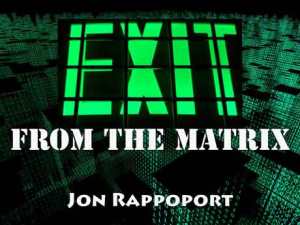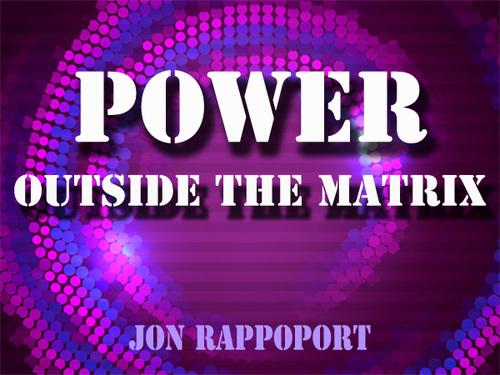Migration of populations vs. the individual
by Jon Rappoport
September 7, 2015
(To read about Jon’s mega-collection, Exit From The Matrix, click here.)
We are seeing a flood of population-migration in various parts of the world. The Globalist strategy is obvious:
Make the only solution a global solution.
Instigate the chaos that causes the migrations, and then come in behind that with the answer: “better planning, better organization, international agreements”—in short, a planned society for the borderless world.
Of course, “global solution” means the individual is cut out of the equation, he doesn’t count, he doesn’t mean anything in the larger scheme of things, he is just another pawn and cipher to move around on the board.
And as more duped and deluded people sign on to this agenda, the whole concept of the individual shrinks and becomes irrelevant.
This is purposeful.
This is the script for the future: in many ways create problems whose only solution appears to be collective.
Psychologically, mentally, emotionally, and spiritually divert the individual’s attention from his own vision, his own profound desires, his own consciousness, his own imagination—and place it within The Group (“all of humanity”).
Propagandize the idea that, if the individual concerns himself with anything other than The Group, he is selfish, greedy, inhumane. He is a criminal.
More and more, this is how the young are being trained these days.
The grand “we” is being sold to them like a cheap street drug. They buy in. They believe this “we” is real, instead of a hollow con designed to drag them into a Globalist framework owned and operated by mega-corporations, banks, foundations, governments, and ubiquitous Rockefeller interests.
And what of the individual, his mind, his unique perception, his independent ideas, his originality, his life-force?
Swept away in the rush toward “a better world.”
I have breaking news. Earth is not a spaceship and we are not crew members. If Earth is a spaceship, it has serious design flaws, because it keeps making the same trip around the same sun every year.
Each one of us does not have a specified function, as a crew member would.
Going back as far as you want to in history, every shortage and scarcity in the world that engendered a crisis was either created by some elite or maintained by them, for the purpose of eradicating dissent and fomenting a collectivist solution. Meaning a solution that came from the top. Meaning a solution that reduced individual freedom.
In recent human history, a different idea emerged: establish severely hamstrung government, in order to protect the individual against it.
This idea existed in its pristine form for about an hour after the ink dried on the founding documents.
Elites emerged with the realization that they would need to build great wealth for certain men, who would then turn around and use their power to expand government and corporate and banking control, in order to sink the population back into the swamp from which they had just been liberated.
On and on it goes. But regardless of circumstances, the individual can author his own freedom and what it implies. He can discover, within himself, extraordinary possibilities and extraordinary consciousness. He can contemplate what it means to create reality that expresses his most profound desires.
And then he can begin a voyage that no one and no group can stop.
Civilizations come and go, rise and fall, but the individual remains.
Behind and below and above all the false prescriptions of the State and its allies, he remains. He is at the core.
But why wait until some distant day to wake up?
The word “imagination,” when properly understood, indicates that the individual can envision and then create futures that never were, and never would be, unless he invented them.
Imagination is the opposite of “provincial,” “restricted,” “well-known,” “familiar,” “accepted.”
That is its danger to the status quo.
That is the true threat the individual poses to all predictive systems.
The modern State works from the assumption that you are renting your life and your self. It sees itself as the landlord, whose beneficent concern, expressed through “programs,” should direct your behavior and thought.
It is softening 1984 into the effects of Brave New World. Pain is the stick and pleasure is the carrot.
Soon you will see official calculations of “pleasure quotients” for citizens. You will even see promises to “expand” those quotients.
“The greater good of all” will be highlighted.
That is the primary selling point.
Its success depends on the individual ceasing to exist in his own mind. He is The Group.
On the horizon: researchers studying the myriad activities of the brain in real time will claim there is no chemical/biological/electrical basis in the brain for the concept of the individual. The whole notion is an aberration, resulting from an imbalance that can be corrected.
Sociologists, anthropologists, psychologists and other charlatans will chime in, pointing to indisputable evidence that, throughout history, it has been the individual who has caused all the trouble. (This propaganda op has been actively underway for a hundred years.)
Yes, the hard scientists, will agree. “But to be more precise, it is the disordered brain that has caused the trouble.”
Yes, my friends, you can be free of the imbalance, and the suffering and turmoil it causes. You can be liberated, and thus discover a new world of pleasure.
“Take the carrot.”
Against all this stands: the individual.
Jon Rappoport
The author of three explosive collections, THE MATRIX REVEALED, EXIT FROM THE MATRIX, and POWER OUTSIDE THE MATRIX, Jon was a candidate for a US Congressional seat in the 29th District of California. He maintains a consulting practice for private clients, the purpose of which is the expansion of personal creative power. Nominated for a Pulitzer Prize, he has worked as an investigative reporter for 30 years, writing articles on politics, medicine, and health for CBS Healthwatch, LA Weekly, Spin Magazine, Stern, and other newspapers and magazines in the US and Europe. Jon has delivered lectures and seminars on global politics, health, logic, and creative power to audiences around the world. You can sign up for his free NoMoreFakeNews emails here or his free OutsideTheRealityMachine emails here.


